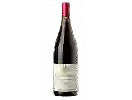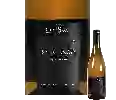
Domaine Saint Roch (Denis Bardon)Les Précieuses
This wine generally goes well with vegetarian, rich fish (salmon, tuna etc) or shellfish.
Food and wine pairings with Les Précieuses
Pairings that work perfectly with Les Précieuses
Original food and wine pairings with Les Précieuses
The Les Précieuses of Domaine Saint Roch (Denis Bardon) matches generally quite well with dishes of rich fish (salmon, tuna etc), shellfish or vegetarian such as recipes of red tuna steak provençal style, monkfish tail with coconut milk and curry or mushroom, bacon and gruyere quiche.
Details and technical informations about Domaine Saint Roch (Denis Bardon)'s Les Précieuses.
Discover the grape variety: Saint-Pierre doré
Saint-Pierre doré blanc is a grape variety that originated in France (Auvergne). It produces a variety of grape specially used for wine making. It is rare to find this grape to eat on our tables. This variety of grape is characterized by large bunches of grapes of medium size. The white Saint-Pierre doré can be found in several vineyards: South-West, Cognac, Bordeaux, Burgundy, Beaujolais, Provence & Corsica, Rhone Valley, Loire Valley, Savoie & Bugey.
Last vintages of this wine
The best vintages of Les Précieuses from Domaine Saint Roch (Denis Bardon) are 2013, 2016, 2018, 2017 and 2015.
Informations about the Domaine Saint Roch (Denis Bardon)
The Domaine Saint Roch (Denis Bardon) is one of of the world's greatest estates. It offers 36 wines for sale in the of Loire Valley to come and discover on site or to buy online.
The wine region of Loire Valley
The Loire Valley is a key wine region in western France. It follows the course of the Loire River on its Long journey through the heart of France, from the inland hills of the Auvergne to the plains of the French Atlantic coast near Nantes (Muscadet country). Important in terms of quantity and quality, the region produces large quantities (about 4 million h/l each year) of everyday wines, as well as some of France's greatest wines. Diversity is another of the region's major assets; the styles of wine produced here range from the light, tangy Muscadet to the Sweet, honeyed Bonnezeaux, the Sparkling whites of Vouvray and the juicy, Tannic reds of Chinon and Saumur.
The word of the wine: Sorting
Action which consists in removing the bad grains, not ripe or affected by the rot. We often use vibrating sorting tables which, by shaking, make the impurities fall to the ground. In the case of sweet wines, we speak of harvesting by successive selections, in several passages, to select the very ripe grapes each time.














